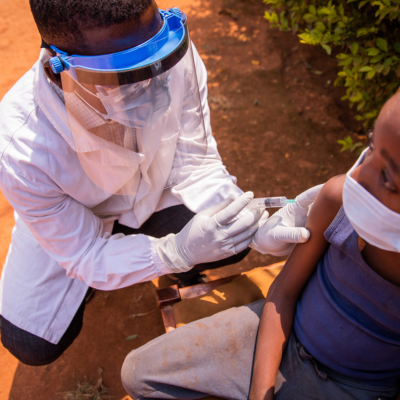

With the Covid-19 Pandemic behind us, many people are justifiably tired of hearing about the pandemic or anything related to it. However, a strong case can be made for periodically visiting the pandemic as it fundamentally changed how we do business and how businesses structure the production of goods and provision of services.
The Global Supply Chain Crisis, a significant fallout of the Covid-19 Pandemic, has left a lasting impact on companies. I recently came across an insightful article on thinkglobalhealth.com that delves into some of the key lessons we can learn from this crisis.
Lessons from the crisis
The article points out that the Covid-19 pandemic demonstrated the extent to which the world is interconnected. In January 2020, four countries reported cases of COVID-19; by March of the same year, that number rose to 165. The rapid pace at which the disease spread indicated the shared vulnerability of every individual, regardless of their race, ethnicity, or country of origin. Despite the shared impact of the pandemic, however, the global response was nationalistically oriented: countries closed their borders and began to hoard essential medical resources. This was particularly seen in many Western countries, reinforcing the perceived divide between the so-called Global North and Global South. By Executive Order, the United States banned the export of personal protective equipment and certain medical devices considered critical for domestic use from April 2020 to June 2021 to adopt to consistently fluid supply chain considerations, as the Federal Emergency Management Agency explained. As Mark Suzman, CEO of the Bill & Melinda Gates Foundation, wrote for Foreign Affairs, “the world’s richest countries largely left the poorer ones to fend for themselves.” Often unspoken is how severely the global health companies with their “efficient and resilient” supply chains failed to deliver to African markets and customers.
Nowhere was this dynamic more evident than with the continued inequity of Covid-19 vaccine distribution. As of late October 2023, of the more than 13.5 billion vaccines administered worldwide, only some 860 million doses (about 6 percent) have gone to people in Africa (who amount to roughly 17 percent of the world’s population). Such inequity was foreseen by international health institutions, including the World Health Organization, which helped create the Covid-19 Vaccines Global Access (COVAX) initiative to ensure universal access to vaccinations regardless of personal wealth.

Image By: Canva
However, many high-income countries undercut COVAX to secure their inflated supply of vaccines. The European Union, for example, ordered 1.6 billion doses by February 2021, enough to fully immunize approximately nine hundred million people. With an adult population of only 375 million, this left an excess of 525 million full vaccinations. It is no surprise, then, that at the United Nations General Assembly a month prior South African President Cyril Ramaphosa stated that “more than 82 % of the world’s vaccine doses have been acquired by wealthy countries, while less than 1% has gone to low income countries.” It was at that same conference that Namibian President Hage Geingob referred to the issue as vaccine apartheid. The leaders’ comments reflect the broken faith in the ability of global health companies to deliver during national and global crises. The failure to meet customer needs in Africa in a timely fashion was not limited to vaccines, but included PPE, Covid tests, and medical devices as well.
The opportunities in the crises
The article points out that despite the many challenges to strengthening Africa’s health security and infrastructure, each disease outbreak—such as HIV/AIDS, Ebola, and even COVID-19—has led to the creation of the region’s most influential health infrastructure. Approximately thirty million Africans were infected with HIV/AIDS when in 2003 U.S. President George W. Bush announced the creation of the President’s Emergency Plan for HIV/AIDS Relief (PEPFAR). Twenty years later, PEPFAR has saved twenty-five million lives and been instrumental in building critical health infrastructure, including three thousand laboratories and seventy thousand health-care facilities that have helped the continent respond to other health crises, notably the outbreaks of Ebola and COVID-19.
The Africa Centers for Disease Control and Prevention (Africa CDC) is another such institution established in the wake of Ebola virus disease (EVD) crisis in January 2017. As Dr. John Nkengasong, the first director of the Africa CDC, explained, by “conceiving and launching the Africa CDC, African leadership leveraged the EVD public health crisis that exposed the weakness of the health systems in affected countries, and did not waste the opportunity.” The Africa CDC is now an integral part of achieving African Union’s health goals as stated in its Agenda 2063, serving as a platform to share knowledge and build the capacity of African countries to respond to current and future health crises. These efforts included the creation of the Africa Medical Supplies Platform (AMSP) in response to medical supply chain shortages in 2020 caused by the COVID-19 pandemic. Funded by the African Export-Import Bank (Afreximbank) and run through the African Union by the Africa CDC, AMSP is an e-commerce platform aimed at connecting medical suppliers with medical providers so that governments, national health systems, NGOs, and donor organizations can purchase necessary medical supplies, including N95 masks, test kits, and ventilators. By January 2021, AMSP had begun implementing a vaccine procurement plan to minimize vaccine distribution inequities. PEPFAR, the Africa CDC, and AMSP are principal examples of how African nations have been able to take the opportunities that lie in the complex health crises they face.
The case for local manufacturing and supply in Africa
Absorbing the lessons of COVID-19 requires adopting a broader and longer-term perspective that can justify the cost of realignment or establishing more resilient regional supply chains. The COVID-19 critical market failure provides a window of opportunity for companies to reevaluate their manufacturing and sourcing footprints. Africa is an attractive region for local manufacturing given global shifts in workforce availability, labour costs, market access, transportation costs, and technological advancements. As the fastest growing and youngest region, with the fastest growing working-age population, Africa will have the largest workforce in the world by 2035; one in every four workers will be African. The abundant labour will keep wages lower than in most emerging markets, including China and India with their aging populations and rising wages.

Image By: Canva
The article adds that the commencement of the African Continental Free Trade Agreement in January 2021 creates the largest free trade agreement in the world, covering fifty-four countries and the largest unified market of more than 1.4 billion consumers in the fastest urbanizing region with a globally connected rising middle class. Through engagement and partnerships, global health companies have an opportunity in these early years to shape and help harmonize the single market’s trade rules and regulations to facilitate building regional supply chains. Consideration should be given to sourcing, manufacturing, warehousing, and distributing products strategically across Africa’s five subregions to lower transportation costs and reduce vulnerability to local, regional, and global shocks. For example, BioNTech plans to manufacture cutting-edge mRNA vaccines in Rwanda and build facilities in Senegal and South Africa, and Moderna is doing the same in Kenya. Global health companies must address the Covid-19 exposed fragility of pharmaceutical supply chains. They should also adopt a forward-looking approach that calculates the market opportunity on a continent projected to have 40 percent of the world’s population by the turn of the century; under a unified market, creating the necessary economy of scale for local manufacturing; and in a region that has proven resilient to repeated global shocks.
Circumventing the next crisis
As you can see, the strength of a company’s supply chain capabilities largely depends on its demand.
Without going into the politics behind ignoring the need of African countries to have equitable access to vaccines when the next global health crisis becomes a reality, steps must be put in place to ensure that Africa builds enough capacity to circumvent the next Global Supply Chain Crisis.





Be the first to comment